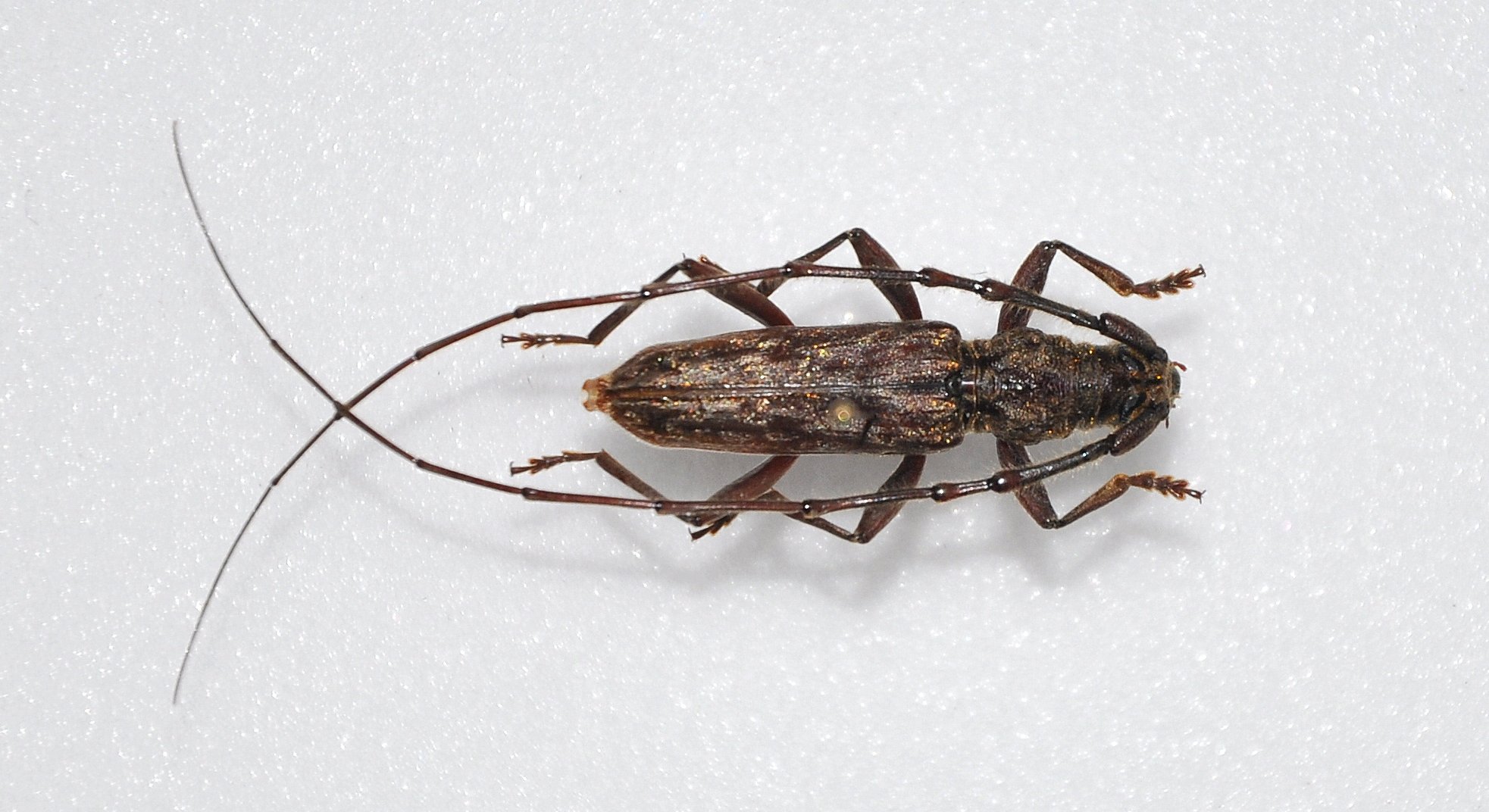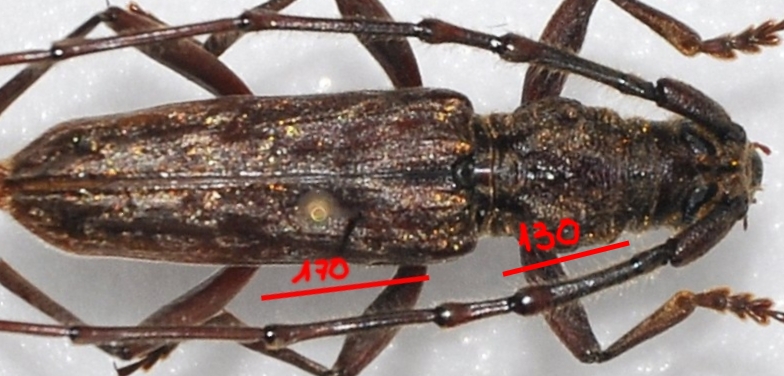| T O P I C R E V I E W |
| Pierre |
Posted - 01/03/2010 : 21:05:44

Another species showing the typical Aeolesthes-look.
Tiny slender, covered with light grey pubescence.
23 mm. |
| 10 L A T E S T R E P L I E S (Newest First) |
| Xavier |
Posted - 19/03/2017 : 18:13:11

66.64 KB
Thanks for the picture sent by email.
Your species is the same than mine, with short -but visible- tooth at apex. Gahan talk about " rounded & unarmed apex", so your species could be Dialeges densepilosus Gressitt & Rondon, 1970 ?? |
| Xavier |
Posted - 19/03/2017 : 16:59:08
I added a picture of elytral apex of a laotian specimen here. I wonder if yours is the same species. |
| Pierre |
Posted - 19/03/2017 : 16:22:26
Difficult question, Xavier... yes, and no. The apex is wearing long setae which make things hard to observe.
Under magnification X25, seen laterally, the sutural margin ends with a very small pointy tip. Short on the right elytron, as good as invisible on the opposite side.
Seen from above I would say: no, the apex is not toothed. |
| Xavier |
Posted - 19/03/2017 : 12:35:05
Is the apex of elytron toothed ? |
| Francesco |
Posted - 19/03/2017 : 07:04:37
 Actually, you can also found Dialeges densepilosus Gressitt & Rondon, 1970 in Laos, very similar to D. undulatus but with with a seemingly reduced distribution. Actually, you can also found Dialeges densepilosus Gressitt & Rondon, 1970 in Laos, very similar to D. undulatus but with with a seemingly reduced distribution.
There are several specimens in the Forum identified as "D. undulatus", but I am not sure. I try to understand the differences... |
| Pierre |
Posted - 03/03/2010 : 21:23:45
Thank you, Francesco, for this identification! |
| Francesco |
Posted - 03/03/2010 : 11:27:33

Well. Hence, it is Dialeges undulatus Gahan, 1891.
The rapport between III and V antennomere (III shorter than V) corresponds as well.
According to my data, the species has been known only from Ceylon, India and Thailand. |
| Pierre |
Posted - 02/03/2010 : 17:18:06
The eyes are not completely separated, the upper and lower parts remain connected. |
| Francesco |
Posted - 02/03/2010 : 13:42:09
The only species that reaches Laos (though not recorded from Vietnam yet) is Dialeges pauper Pascoe, 1856.
You should check whether the eyes are really completely divided in two parts.
The female is present here in the Forum. |
| Francesco |
Posted - 02/03/2010 : 11:45:05
Male of Dialeges, surely. I have to check which species is present there. |


